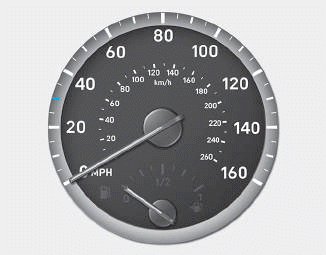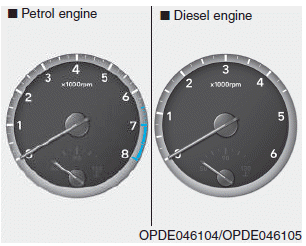Hyundai i-30: Installing a Child Restraint System (CRS) / Securing a Child Restraint System with a lap/shoulder belt
When not using the ISOFIX system, all Child Restraint Systems must be secured to a rear seat with the lap part of a lap/shoulder belt.
Installing a Child Restraint System with a lap/shoulder belt

To install a Child Restraint System on the rear seats, do the following:
1. Place the Child Restraint System on a rear seat and route the lap/ shoulder belt around or through the Child Restraint System, following the Child Restraint System manufacturer’s instructions. Make sure the seat belt webbing is not twisted.

2. Fasten the lap/shoulder belt latch into the buckle. Listen for the distinct “click” sound.
Information
Position the release button so that it is easy to access in case of an emergency.

3. Remove as much slack from the belt as possible by pushing down on the Child Restraint System whilst feeding the shoulder belt back into the retractor.
4. Push and pull on the Child Restraint System to confirm that the seat belt is holding it firmly in place.
If your Child Restraint System manufacturer recommends the use of a top-tether with the lap/shoulder belt, see page 2-40.
To remove the Child Restraint System, press the release button on the buckle and then pull the lap/shoulder belt out of the Child Restraint System and allow the seat belt to retract fully.
 Suitability of each seating position for ISOFIX Child Restraint Systems
according to ECE regulations
- Fastback
Suitability of each seating position for ISOFIX Child Restraint Systems
according to ECE regulations
- Fastback
IUF = suitable for ISOFIX forward child restraints systems of universal
category approved for use in the mass group.
IL = suitable for particular ISOFIX child restraints systems (CRS) given
in the attached list...
 Suitability of each seating position for "universal" category belted Child
Restraint Systems according to
ECE regulations
Suitability of each seating position for "universal" category belted Child
Restraint Systems according to
ECE regulations
U = Suitable for "universal" category Child Restraint Systems approved for
use in this mass group.
U* = Suitable for "universal" category Child Restraint Systems approved for use
in this mass group (When you install the child seat on Front Passenger seat,
you should move the seat position to upward and the seat back position to
forward properly, to restrain child seat...
Other information:
Hyundai i30 (PD) 2018-2025 Service Manual: Stop Lamp Switch
Components and components location Components 1. Brake member assembly 2. Stop lamp switch 3. Return spring 4. Brake pedal arm assembly 5. Brake pedal pad Schematic diagrams Schematic Diagram System Circuit Diagram Terminal Function Teminal Description 1 IGN1 2 BS 3 - 4 B+ 5 Stop Lamp 6 Ground Troubleshooting Troubleshooting 1...
Hyundai i30 (PD) 2018-2025 Service Manual: Seat Heater Switch
Components and components location Components [Front seat switch] 1. Driver seat heater switch 2. Assist seat heater switch Schematic diagrams Circuit Diagram [Front Seat Heater Switch(Driver)] [Front Seat Heater Switch(Assist)] Repair procedures Removal [Front Seat] 1...
Categories
- Manuals Home
- 3rd Generation i30 Owners Manual
- 3rd Generation i30 Service Manual
- Front windscreen wiper service position
- Engine compartment
- Exhaust System (DPF) Warning Light. Glow Indicator Light
- New on site
- Most important about car
Gauges and meters
Speedometer

The speedometer indicates the speed of the vehicle and is calibrated in kilometers per hour (km/h) and/or miles per hour (MPH).
Tachometer

